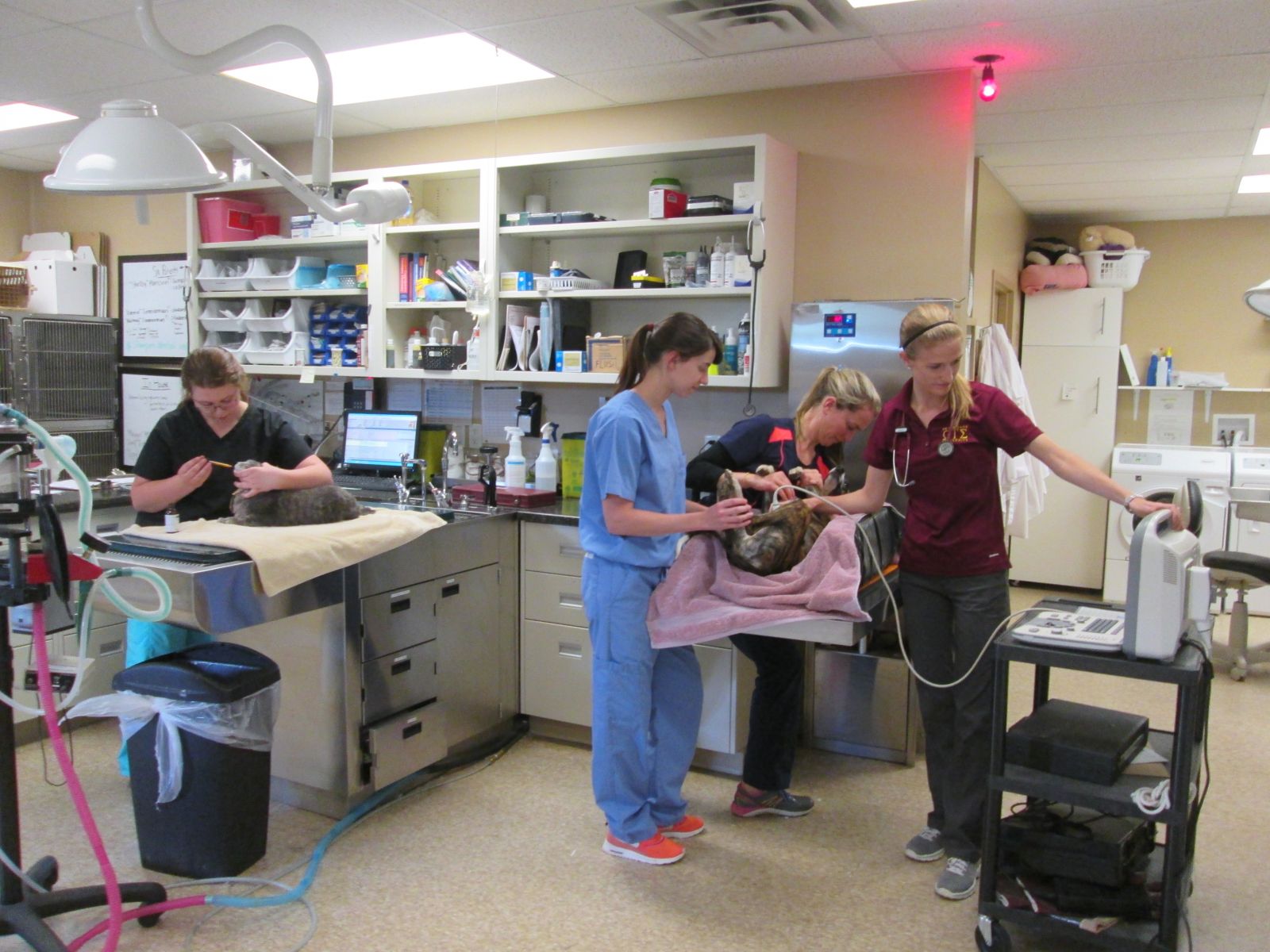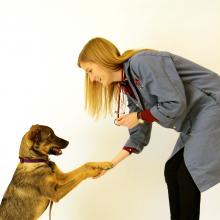When clients step into a vet clinic, they are often greeted by a smiling receptionist and a tasteful display of pet paraphernalia; namely the clinic’s forefront. Most of the time, the deepest a client will penetrate into a clinic is the exam room and nothing further, leaving “the back” as a complete mystery. As an owner, it can be stressful to see your fur child be taken through the other door of the exam room into Narnia. So what really goes on behind the scenes with a pet?
After having spent two weeks at the Prescott Animal Hospital, I can confidently say that what happens in “the back” is a finely orchestrated operation that’s in a perpetual motion from open to close. There is a team of vet assistants, kennel students, registered technicians, office managers and veterinarians who are constantly working beyond the forefront to make the client and pet experience exceptional.
Rest assured that pets are in good hands in those brief moments they are taken away from their owners. Some of you may be wondering; “why do they have to go to the back in the first place?” The answer to that varies greatly, but for the majority of cases it’s for the client’s convenience and the comfort of the pet. Many owners cringe at the sight of a rectal temperature, so more often than not, we like to keep everyone’s experience positive by taking the advanced procedures to the back. A blood draw or an anal gland expression can be a shock to the visual and olfactory senses. Sometimes it’s best to keep things like pus-filled abscess drainages for the clinic staff that has seen and done it all without churning up their lunch.

Hannah, kennel student and hopeful veterinarian, is administering vitamin B to Henry the clinic cat. Registered technician Erin, and vet student Teresa hold Victor the whippet while I ultrasound the abdomen to find a bladder to perform a cystocentesis.
Another factor to consider is patient compliance. Believe it or not many pets are better behaved when they are out of their owner’s site. And if they do tend to be a little feisty, there are trained staff and gadgets behind the forefront. For example a blanket to “burrito wrap” that swatting cat, or an extra set of hands to properly hold the six- month-old bouncy Boxer. This ensures the safety of the animal and the handlers.
Finally, we have to consider time. Vet clinics do their best to stay on schedule with appointments. However, with so much to talk about in a short amount of time, this proves to be a trying task. By allowing a pet to go back for a procedure, the vet is able to keep talking to the client while other staff members are already prepared with the materials and manpower to get the task done efficiently.
It’s important to note that every clinic adopts a different approach to appointments, and that pets don’t always venture off beyond the forefront. However, for those clinics where this is a reality, it is important to recognize that this can be a stressful concept to owners and pets. And from the owner’s perspective, it’s key to ask questions or maybe even take a tour of the whole clinic. The reality of it is that every patient and owner is unique, communication is important to determine what works best for all parties including the clinic staff.
One thing is for sure, it’s a bustling, hard-working, mind blowing place behind the forefront!
